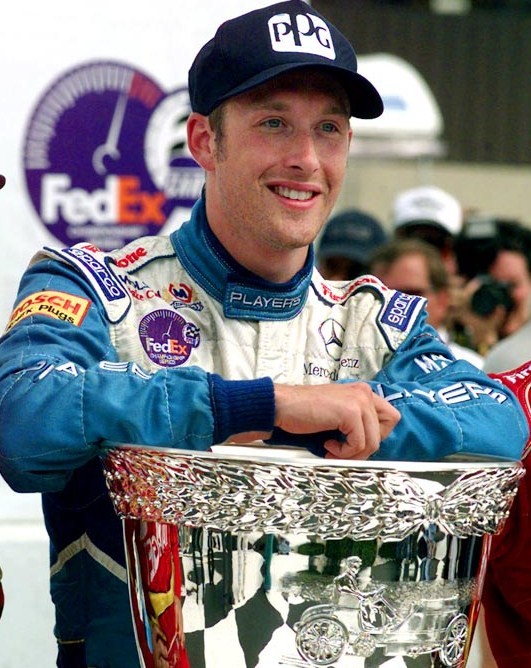Bottom post of the previous page:
RIP to one of the great legends and gentlemen of our sport.I still remember well him going through the old untamed Woodcote in glorious power slides.
RIP Ronnie P.

Bottom post of the previous page:
RIP to one of the great legends and gentlemen of our sport.

https://www.motorsportmagazine.com/hist ... tch-anyone‘Mad Ronald’ Mike Hailwood used to call him. In the Peterson era, 35 and 40 years ago, F1 may have been infinitely more dangerous than now, but it lacked the hard edge of today, and genuine friendships between the drivers were not unusual.
Peterson was never a textbook racing driver, in the Stewart sense of the word, but rather one who could make a car dance to his tune, a man of reflex and instinct. René Dreyfus once said of Nuvolari that in his case understeer and oversteer were an irrelevance; whatever the car’s inclinations, it would do what its driver required. Ronnie was like that.
In fact, that was just as well, because in all truth he was a hopeless test driver, and admitted as much. “Ronnie was amazing in that respect,” Colin Chapman once told me. “You could change a car really quite fundamentally – and he’d still turn in the same sort of times! So you’d ask him how it felt different from before, and he’d say, ‘Ummm, slides a bit more...’ Where? At the front, the back, both ends? And he’d say he wasn’t really sure! Made me tear my hair out. Then, of course, he’d go and put the thing on pole, so you couldn’t really get too mad with him...”
Chapman always reckoned that Peterson was at his best when partnered with a supreme test driver, and it was lucky for him that, in two spells with Lotus, his team-mates were Emerson Fittipaldi and Mario Andretti. “He’d mess around in practice, while Emerson worked on his set-up, then copy his settings – and nick pole position from him! Used to madden Emerson, that, and you couldn’t blame him…”
Ronnie’s talent was such that he could drive around any problem his car might have, and he had the confidence to commit to a flat-out corner in the certainty that he could sort it all out.
“I don’t think Ronnie ever had the mental application that a complete racing driver needs,” said Jackie Stewart, “but I admired his ability tremendously. Any number of times, particularly in 1973, I’d follow him into a corner and think, ‘Ooooh, Ronnie, this time you’ve overdone it, you’re gone!’ But he always seemed to get it back somehow. It never surprised me that the spectators loved him – he was exciting to watch from where I was, too!”
As with Jochen Rindt or Gilles Villeneuve, Peterson was a driver who made you seek out a particular corner for the privilege of watching him through it. In all my years of watching F1 drivers, I have never seen anything better than Ronnie’s Lotus 72 through Silverstone’s original Woodcote Corner.
He would have been wasted in the high downforce era, I think, because delicacy, while still required to some extent, is largely hidden by the sheer ability of the cars. That black Lotus through Woodcote was all catch-lose-catch, the tail always trying to come around, the driver always ahead of it.
From a statistics point of view, the career of Peterson – like Rindt, like Villeneuve – is not especially impressive, with 10 victories from his 123 Grands Prix. But statistics alone cannot tell of a man’s significance in his sport. In only four of his nine years in F1 did Ronnie win races, for much of his career was squandered on poor cars. Forty-seven races with March, for example, yielded but a single victory.
Peterson and Andretti were great pals – indeed, in their few months of working together, in 1978, their friendship became as firm as any I have known between drivers, and Mario admitted that he had reckoned without Ronnie’s absolute honesty: “Something, let’s face it, you don't encounter too often in this business...”
What the pair of them had in ‘78 was the Lotus 79, the first true ‘ground effect’ car, and from early in the season it became apparent that the World Champion would be either Andretti or Peterson. The odds, though, were squarely with Mario, because Ronnie’s contract required him, in normal circumstances, not to beat his team-mate.
“A lot of people were very sniffy about that,” recalled Chapman, “but Ronnie wasn’t one of them. He knew damn well that Mario had worked hard to bring Lotus back to prominence, that he should have been World Champion in ’77 – that he’d earned the title. Ronnie was a very great driver, but he owed a lot to Mario, and he knew it – it was Mario who made the Lotus 79 the car it was, and Ronnie benefited from that, and knew it. He was a very honourable man.”
So he was, and that day at Monza, when Peterson died from injuries sustained in a multiple accident at the start, was among the saddest I can remember. Everyone loved him, as I said, and I remember him now not only as one of the greatest chargers of all time, but also as a delightful guy, a loyal team member, a man of complete integrity. As for pure speed, he was a match for anyone.


*Be warned*


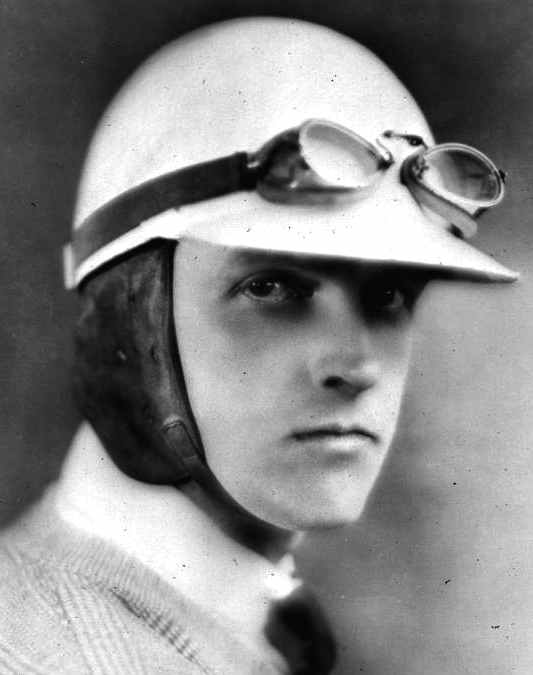
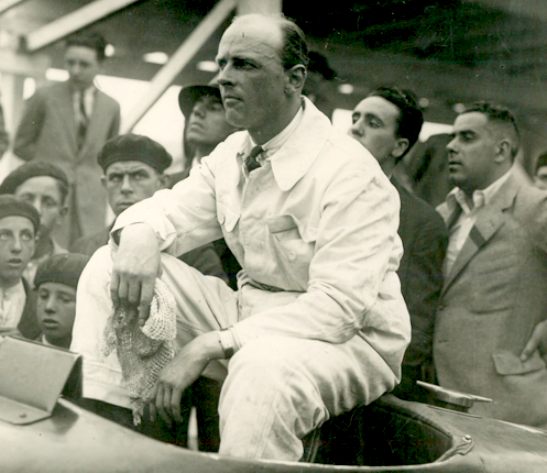
http://www.bluebird-electric.net/henry_seagrave.htmSir Henry O'Neil de Hane Segrave was born on the 22 September 1896. He passed away dramatically on the 13th of June 1930, attempting to top 100 miles per hour on water. Sir Henry was also famous for setting three land speed records and before his tragic accident, a water speed record. He was the first person to hold both the land and water speed records simultaneously. He was the first person to travel at over 200 mph (320 km/h) in a land vehicle. The Segrave Trophy was established in 1930 to commemorate his life.
WWI
Segrave was born on 22 September 1896 in Baltimore, Maryland of an American mother and an Irish father - he was a British national. He was raised in Ireland and attended Eton College in England. He was commissioned into the Royal Warwickshire Regiment in 1914 and served as a fighter pilot with the Royal Flying Corps from January 1916 (although he retained his commission in the Royal Warwickshire Regiment). He was wounded twice, in 1915 and 1916. In July 1916 he became a flight commander as a temporary captain. In 1919 he transferred to the Royal Air Force Administrative Branch, but soon resigned his commission due to his wounds. Segrave bragged that he would drive a car at over 200 miles per hour (320 km/h). There is nothing wrong with a little ambition, that drives us to excell.
AIRCRAFT DESIGN
When Segrave's interest in flying returned in the late 1920s he designed an aircraft for luxury touring. The aircraft was a wooden twin-engined monoplane built as the Saro Segrave Meteor, three metal versions being built as the Blackburn Segrave.
MOTOR RACING
In 1921 the 200-Mile Race at Brooklands was organised by the Junior Car Club, the first long-distance race to be run in Britain. The race, a contest for 1,500 c.c. light cars, was won by Segrave in a Talbot-Darracq.
He was the first Briton to win a Grand Prix in a British car. He won the 1923 French Grand Prix and the 1924 San Sebastian Grand Prix at Circuito Lasarte (Spain) in a Sunbeam automobile. After a further win at Miramas in France, he retired from racing to concentrate on speed records.
LAND SPEED RECORDS
On 21 March 1926, he set his first land speed record in his 4-litre Sunbeam Tiger Ladybird on the sands at Southport, England at 152.33 mph (245.149 km/h). This record lasted for just over a month, until broken by J.G. Parry-Thomas driving Babs
He regained the land speed record in 29 March 1927 in his 1000 HP Sunbeam Mystery (also known as 'the Slug') at the Daytona Beach Road Course at 203.79 mph (327.97 km/h), becoming the first person to travel over 200 mph (320 km/h).
Segrave set his final land speed record at 231.45 mph (372.46 km/h) in his new car, the beautiful Golden Arrow, at Daytona Beach on 11 March 1929. This car had only 18.74 miles (30.16 km) on it, which is the least used car to set the record. After being the first person on the scene of Lee Bible's death, Segrave began concentrating on the water speed record. Golden Arrow has never been used since. The Golden Arrow is on display along with the Sunbeam 350HP and the Sunbeam 1000HP at the National Motor Museum, Beaulieu.
WATER SPEED RECORDS
Segrave was also an avid motorboat racer. After his 1929 land speed record, he immediately went to Miami for a motorboat race against Garfield Wood, multiple water speed record holder and the first man to travel over 100 miles per hour on water. Segrave won, causing Wood's first defeat in nine years. After Segrave returned to Great Britain, he was knighted for his many accomplishments.
A few months after receiving his knighthood, on Friday 13 June 1930, Sir Henry Segrave unknowingly captured the water speed record driving Miss England II on England's largest natural lake, Windermere. In a follow-up run the boat presumably hit a log and capsized, killing Miss England's mechanic, Victor Halliwell. Segrave's unconscious body was recovered, and taken to a hospital. He regained consciousness for a moment, was informed that he had indeed broken the record, then died a few moments later of lung haemorrhages - read more below.
Kaye Don subsequently broke two more world water speed records in Miss England II.
13 JUNE 1930
On March 29, 1927. Sir Henry O'Neal de Hane Segrave and Gar Wood were standing in front of the latter's winter home on Indian River, Florida. After the War Segrave had told the world that he would build a race car and drive it over the sands of Daytona Beach, Florida, at over two hundred miles an hour. The world thought the War had driven him mad. On that very morning in March, 1927, he had rocketed his Mystery Sunbeam across one measured mile of Daytona sands at 203.79 miles an hour. That was the fastest any human being had ever traveled on land.
Tall, slim, handsome, clothed in white tropic knickers tightened with a leather belt about his waist, this young Briton, schooled in danger, was like a bundle of charged steel wire, controlled. At seventeen he was in charge of British machine gunners in France during the War. He left Eton when the War broke out, went to Sandhurst. There he was gazetted a lieutenant in the infantry and rushed to the front.
On May 17, 1915 he was shot in a hand to hand encounter in what was thought to be an abandoned German trench. Segrave was rescued by men of his own battalion and taken back of the lines. For days he was near death. He was sent back to England, convalesced and before long he had joined the British Air Service. He flew to the front April 14, 1916. In less than two months he was gazetted captain and flight commander. He brought down four enemy ships before his own ship was riddled with enemy bullets. His broken body was found at dusk, slumped in a battered cockpit in a tree.
He lived to become technical advisor of the British Air Council. After the War he joined the Sunbeam company. In March, 1927, he took his Mystery Sunbeam to Daytona, Florida, where he set a land speed record that amazed the world.
Having broken the 200 mph barrier, Major Henry Segrave drove the Golden Arrow to a new record speed of 231.446 mph (372.340 kph), again at Daytona Beach, Florida. What made this car unique is that it is on record as the least used car; having been driven a total of 18.74 miles. Segrave was later knighted for his achievements. Sir Henry also attempted to capture the water speed record in his Miss England II when his boat hit a log in the water and capsized, killing Segrave and mechanic Victor Halliwell. (Picture of Segrave & Golden Arrow here.) The competition between Campbell and Segrave brought down the 300 mph barrier.
Segrave, speaking to Gar Wood, said: "There's no reason why Lord Wakefield will not be interested in boats as far as I can see," he said. "We've won the records we wanted on land and in the air. What England wants now is the water speed record and the British International Trophy. I think Lord Wakefield will be interested."
Sir Henry O'Neil de Hane Segrave (22 September 1896 – 13 June 1930) was famous for setting three land speed records and the water speed record. He was the first person to hold both the land and water speed records simultaneously. He was the first person to travel at over 200 mph (320 km/h) in a land vehicle. The Segrave Trophy was established in 1930 to commemorate his life.
Segrave almost immediately began to experiment, to study. He went to the plant of Hubert Scott-Paine at Southampton, England. Together with Fred Cooper they built Miss England I, powered with the 900-horsepower Napier Lion engine Segrave had used in his Mystery Sunbeam. The boat was twenty-seven and one-half feet long with a seven and one-half foot beam, built of five-skin mahogany.
They made mistakes. Perhaps the greatest mistake they made was building a flexible hull. The hull of a high speed boat must be firm, rugged. At high speeds water becomes similar to a solid; just as air at high speeds in a plane becomes a liquid. No flexible hull could stand the jarring of a boat travelling over a sheet of corrugated glass at eighty miles an hour. That's what a sheet of water becomes at high speed-grooved glass.
Segrave found that out in Florida in the Spring of 1929. He shipped his famous racing car, the Golden Arrow, and his Miss England to America on the same boat. With the Golden Arrow he set a new land speed of 231.36 miles an hour at Daytona Beach on March 11, 1929.
After the record Wood went to Segrave and asked the Englishman to show him his boat and give him a demonstration of its performance. Upon looking at the boat when it was out of water Wood saw immediately that the propeller was too large and the bow rudder poorly designed. A test run of the boat proved both these factors to be true.
The Committee at Miami Beach was anxious to have Segrave bring his boat to the annual Regatta and pit it against Wood's Miss America VII. In view of Wood's criticism of his boat, Segrave didn't know what to do, so Wood volunteered to send his crew of mechanics to Daytona Beach to put on a proper rudder and to furnish Segrave with suitable propeller
'Sunbeam' LSR car rear tail fin
After considerable calculation of Segrave's horsepower and hull design Wood ordered three propellers from the Hyde Company and gave them to Segrave. With a new rudder on his boat and with Wood's propellers the Miss England I was a very formidable, competitive boat. That's what Wood wanted. He wanted a good race.
After a successful trial run at Daytona Beach Segrave shipped his boat to Miami Beach. He knew that if he could at least make a showing in this contest he'd have little difficulty getting financial backing from Lord Wakefield for a future Harmsworth boat. He discussed this possibility with Wood and the American sportsman agreed that they should stage a close race. Wood was extremely anxious for Segrave to play an important role in Harmsworth competition.
Segrave had a strong vivid stripe of the dare-devil in him. Before the race he asked Wood for the pole position. Wood said, "That's dangerous, sir. My boat is faster. When I cut in on you you'll have to take my wash." Segrave answered, "I'll take the chance." He was given the pole position. When Wood cut across Segrave's bow the solid spray of his Miss America VII struck Segrave full in the face. For a few desperate seconds Segrave didn't know what had happened.
Miss America VII had been in the South for some time and the salt water had eaten away the steering cable unbeknown to the Wood crew. The two boats made a beautiful start. The dark mahogany hull of the Miss America and the pure white hull of the Miss England. Although Miss America VII led the Miss England to the first turn, on making the turn the steering gear cable let go and Miss America was unable to proceed. The news was flashed over the world that at last a British boat had beaten Gar Wood in a championship race. The rules governing this particular event were set up by the American Powerboat Association on what is known as a point system; and all the British boat had to do in the second heat was to finish to gain one more point than the American boat which did not finish the first heat. Segrave finished the second heat and won the race even though Gar Wood lapped him three times.
According to American boat designers, the English made grave mistakes in building Miss England I. In the first place Fred Cooper, designer of the boat, had insisted on both a bow and an aft rudder. Segrave said it helped him to make sharper turns. But Wood told him that an aft rudder is dangerous. Events at Detroit in 1931 proved it when Kaye Don almost went to his death. Wood uses simply a bow rudder. He makes the sharp turns with his propellers, throttling the inside (buoy) propeller, while the outside propeller is speeded.
Wood also believed that it is dangerous to set the cockpit ahead of the engines. He told Segrave:
"I want those engines ahead of me when we crack up. If your hull blows to pieces, what chance have you? Those engines are a wall of steel in front of you." Wood discovered how true this was when his Miss America VI blew up on the St. Clair River the year before this, 1928. But Segrave said, "I've got to see the course ahead of me. I can't see with those engines spitting flames and gases in my face."
The English persisted in this theory. Disaster rode high on the wings of their next boat, Miss England II. Segrave may have escaped death had he been sitting BEHIND the engines at Lake Windermere. I merely say "may have" because nothing is certain in this dangerous business. The fact is that Wood, after almost thirty years of racing, still lives.
Backed by the British Air Ministry, the Rolls-Royce Company, Ltd., had developed a new aircraft engine of 2,000 horsepower. Wakefield went to the Ministry and contracted for the rights to use two of those engines.
When the boat was finished it was a seven-ton projectile, powered with two 2,000 horsepower Rolls-Royce engines that spun a tiny two-bladed propeller through the water at 12,000 revolutions a minute.
Major Henry Segrave with the Napier Lion aero engined "Golden Arrow" set the record of 231.567 mph at Daytona Beach on 11th March 1929
Major Henry Segrave with the Napier Lion aero engined "Golden Arrow" set the record
of 231.567 mph at Daytona Beach on 11th March 1929. The only run for Golden Arrow
as Segrave turned his attention to the World Water Speed Record.
Fred Cooper installed both a bow and an aft rudder. (Note: a bow rudder is a destabilizing appendage, which creates drag ahead of, instead of behind the moving mass of the vessel) The engines were still behind the cockpit. Segrave and Cooper speeded the boat to completion and took it to Lake Windermere for a try at Gar Wood's world record-92.838 miles an hour, done with Miss America VII on the Detroit River in 1928.
Here was a young man with scarcely two years' knowledge of fast boats already aiming at the world speed record. And doing it with a 4,000 horsepower bomb that hadn't tasted water. That is the character of the Briton.
Miss England II was ready on Friday, June 13, 1930. Segrave, Michael Willcocks, engineer of the boat, and W. Hallwell, of the Rolls Royce Company, Ltd., all dressed in spotless white overalls and special steel lifebelts, stepped into the cockpit. Segrave turned to Willcocks and said, "It's Friday the 13th. I wonder what's going to happen." Two of them were going to their death.
The boat shot out above the measured-mile straightaway where the official timers stood, ready to dash over the measured-mile laid out about in the center of the lake between Lakeside and Ambleside. Segrave was making a few practice spins far out there above the markers. The Miss England II looked like a white ghost, its wings of spray spread wide, its engines droning-a thing of beauty, symmetry, flawless grace. It was perhaps the most beautiful speedboat ever built, its bow and its aft end tapering almost to the thinness of a knife blade.
It cut a great white arc in the water, then it straightened. Segrave was cutting down toward the markers, his steady hand tight on the wheel, his eyes glued to the narrow, glass-flat path before him, his foot pressing the throttle to both engines.
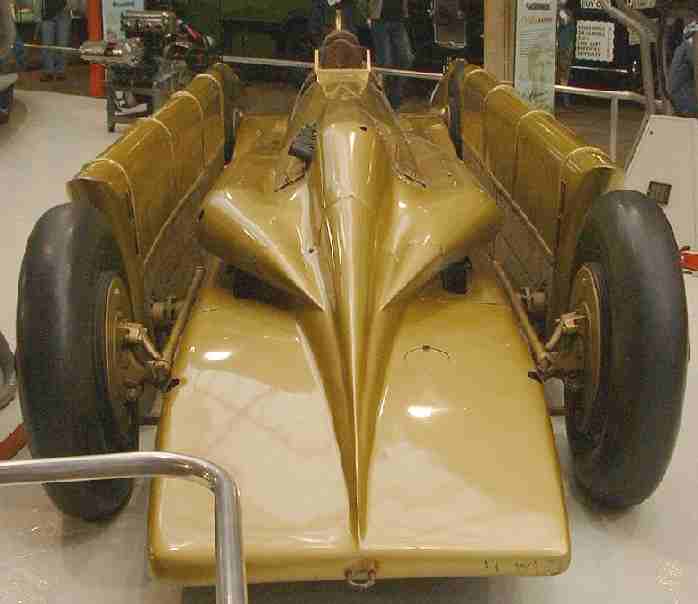
Napier Lion aero engined "Golden Arrow" on display at Beaulieu
The engines cannoned louder as they approached the first marker. When he crossed, throttles down, the thing was like the mad screaming of 4,000 wounded war horses, agonized and frightened. Miss England II shot across the first mile at 96.41 miles per hour. Two runs must be made across the measured mile; one against wind or current, one with. It came back at 101.11 miles an hour. The average was 98.76 -a new world record.
But this courageous young Briton did not know he had broken the world record. He was not satisfied. He took his craft to the upper end of the course again and brought it back with everything it had. The roar was terrific. The official timers could not clock it this time. It did not complete the mile. It made a sudden turn, the quivering thing shot clear of the water like a white rocket, its engines screaming. Segrave and his two men were pitched like meteors from the cockpit. There was a puff of blue, curling smoke . . . a dive . . . silence.
Ten boats rushed out to the rescue. Segrave himself was picked up by P. F. King, of Windermere, who plunged into the lake after him. He was unconscious. Hallwell drowned. Willcocks was severely injured.
Segrave and Willcocks were rushed to a hospital. Segrave suffered a broken arm, a broken rib and a fractured thigh. He regained consciousness for a few minutes. He turned to Lady Segrave at his bedside and asked, "How are the lads?" meaning his men. And then, "Did we do it?" Lady Segrave told him he had, that he broken the record.
He died in a few moments of lung hemorrhages. The drowned body of Hallwell was found, a pencil clutched in one hand, a pad of paper in the other. He'd evidently been taking tachometer readings. Willcocks recovered.
Probably no one will ever know for sure what sent these men to their death. It may have been the tremendous torque on the tiny propeller. Twenty minutes after the disaster a water-soaked branch of a tree, three inches thick, was picked up several hundred yards from the stern of the boat. That may be the answer. No one knows.
The most likely solution to the riddle is that the detachable step ripped off. The forward plane of Miss England II was built on after the main hull was completed and was not an integral part of the boat in its original design. The reason for this, Segrave explained, was that neither he nor his designers knew for sure what angle the forward plane should be in order to get the best performance and that the structure they applied was made so that it could be moved and changed.
The Segrave Trophy was established in 1930 to commemorate the life of Sir Henry Segrave. A former fighter pilot in World War I, Segrave went on to become Britain's top motor racing driver of his era. He was the first Briton to win a Grand Prix in a British car, winning the French and Spanish Grand's Prix in a Sunbeam. He later went on to set the world land speed record, but was later killed setting the world water speed record. The Seagrave Trophy is awarded annually to a British subject who accomplishes the most outstanding demonstration of transportation by land, air or water.
THE SEGRAVE TROPHY
In March of 2013 The Royal Automobile Club in the UK awarded the Segrave Trophy to John Surtees OBE in recognition of John’s unique achievement of winning seven motorcycle world championships and then victory in the 1964 Formula One World Championship. Surtees is the only person in the history of motor sport to have been World Champion on two wheels and four.
Tom Purves, Chairman of the Royal Automobile Club, is quoted as saying:
"John is one of the most accomplished and versatile sportsmen of all time, winning seven motorcycle world championships and then victory in the 1964 Formula One World Championship. He is the only person in history to have won world championships on both two wheels and four yet, until today, John’s name was not on the distinguished list of Segrave Trophy winners. This award is made to John not as recognition of a lifetime of achievement, but as a, somewhat overdue, recognition of a unique sporting triumph that would, doubtlessly, have been recognised at the time had it not been for Donald Campbell who broke the land and water speed records simultaneously the same year. It is therefore our great honour to salute John’s successes, albeit perhaps a little later than we should have done".
On receiving the trophy, Surtees is reported to have said:
"Donald Campbell achieved his success on land and water in the same year which perhaps overshadowed my having taken 4 years to put two and four wheel titles together. I am honoured, as I approach the fiftieth anniversary of my Formula One World Championship title, to receive this prestigious Trophy on behalf of not only myself but also the world of two and four wheel motorsport."
The recipient of the Segrave Trophy is selected by a panel of experts that includes leading figures from the automotive and aeronautical worlds. The Trophy was first awarded in 1930, in memory of Sir Henry Segrave, who was a leading fighter pilot, grand prix race winner and world speed record holder on land and water.
Past winners of the Segrave Trophy include Malcolm Campbell, Stirling Moss, Donald Campbell, Bruce McLaren, Jackie Stewart, Roger Clark, Barry Sheene, Mike Hailwood, Richard Noble, Nigel Mansell, Colin McRae, Damon Hill and Lewis Hamilton.

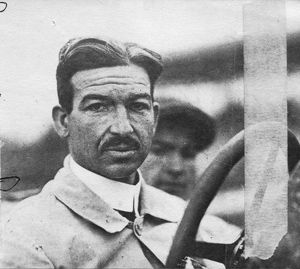
from Maserati, re their Alfieri concept carAlfieri - what's in a name?
Had he not died at 44, Alfieri Maserati could have become a household name. His early death robbed Alfieri of the chance to be remembered among the auto industry’s most noteworthy talents. Because of his central role in founding the company bearing his family name and running it for the first 18 years, his legacy could have been unmatched. So it’s fitting that Maserati chose to honour him with the 2014 Geneva Motor Show concept car, built to celebrate Maserati’s centennial in style.
The signature
Alfieri’s autograph is located on the one-page form that he filled out on Tuesday, December 1st, 1914, in which he officially asked for a license for his newly-opened workshop, somewhat ostentatiously named ‘Officine Alfieri Maserati’. The document was scanned, Alfieri’s autograph processed and a logo from his signature created. Maserati’s Centro Stile, responsible for the concept car’s styling, made the logo blue — Maserati’s signature colour today.



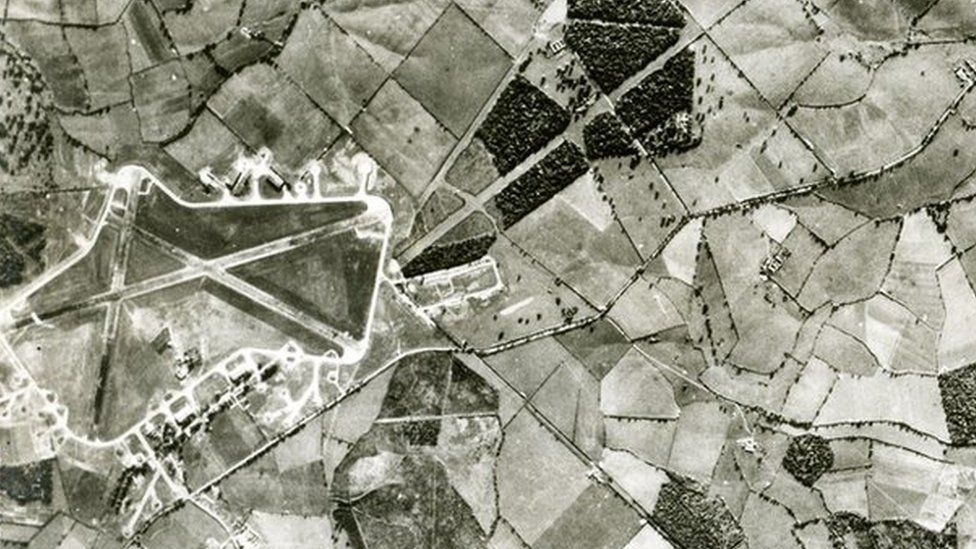
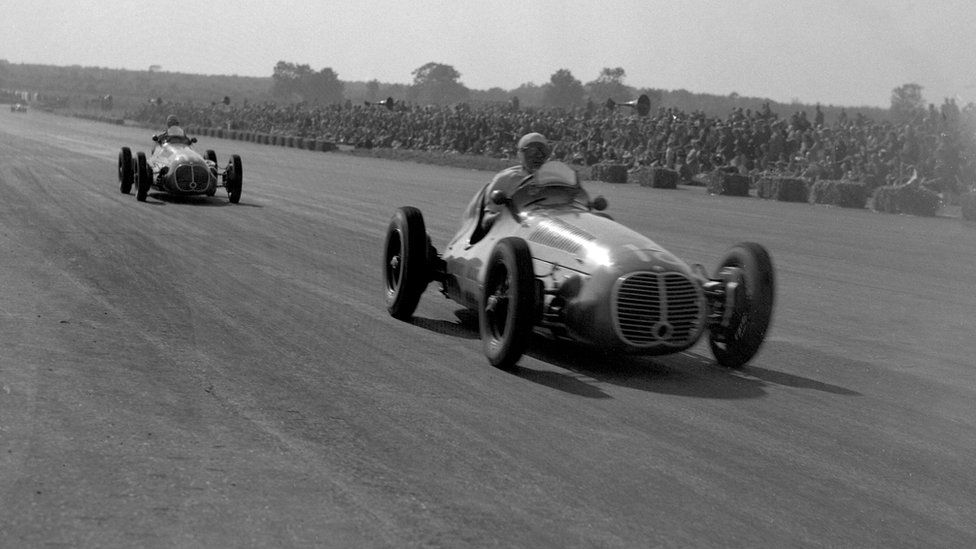
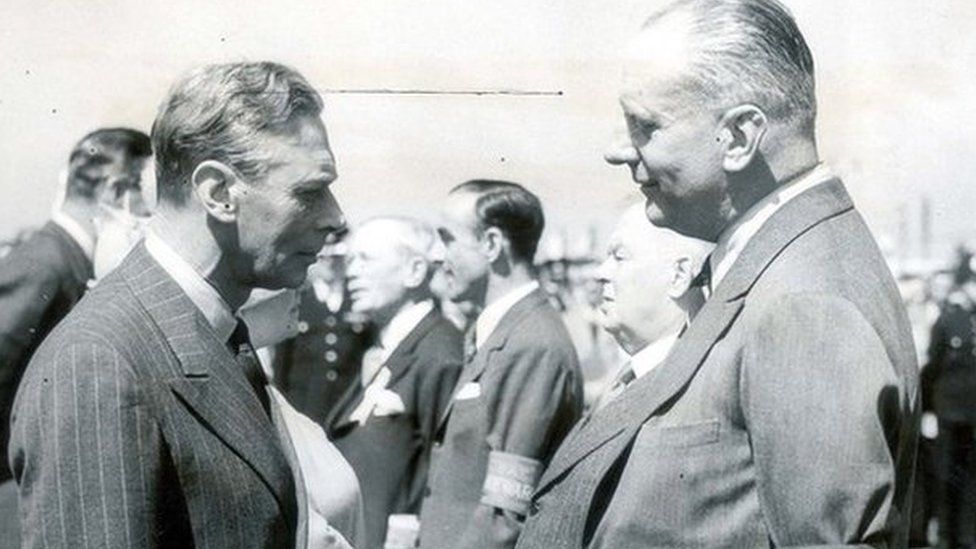
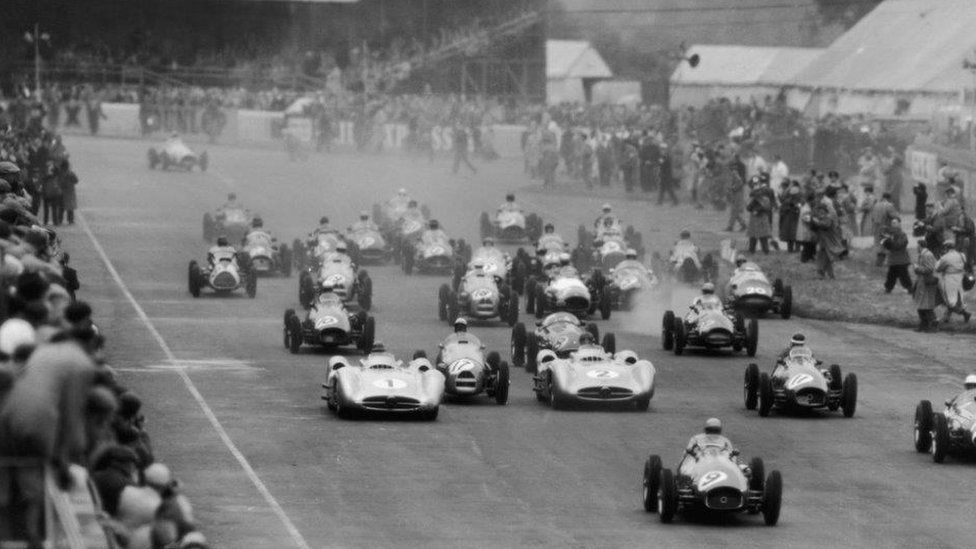
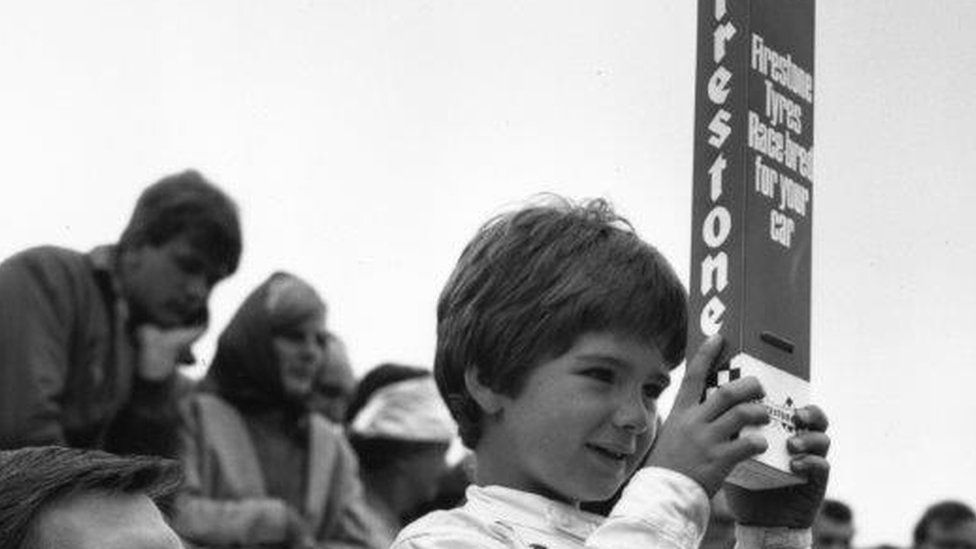

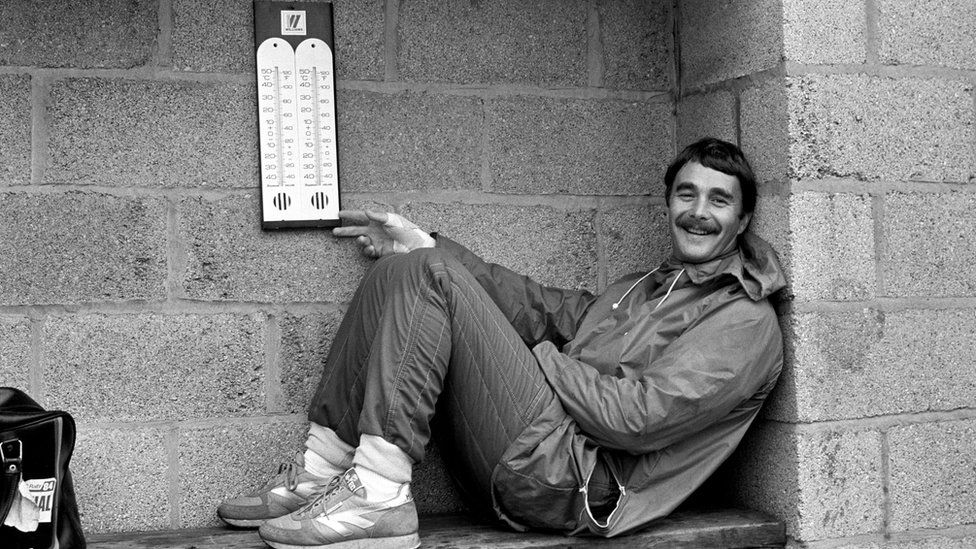
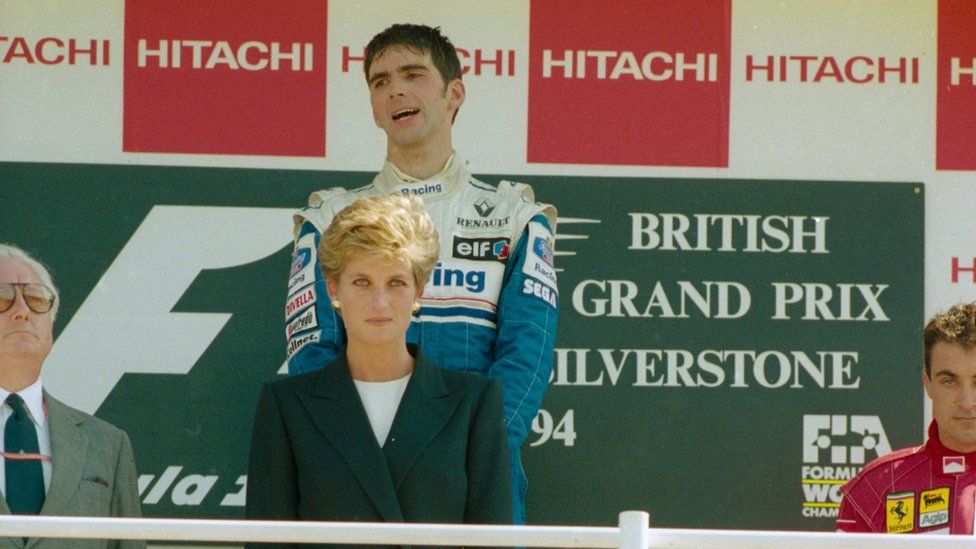
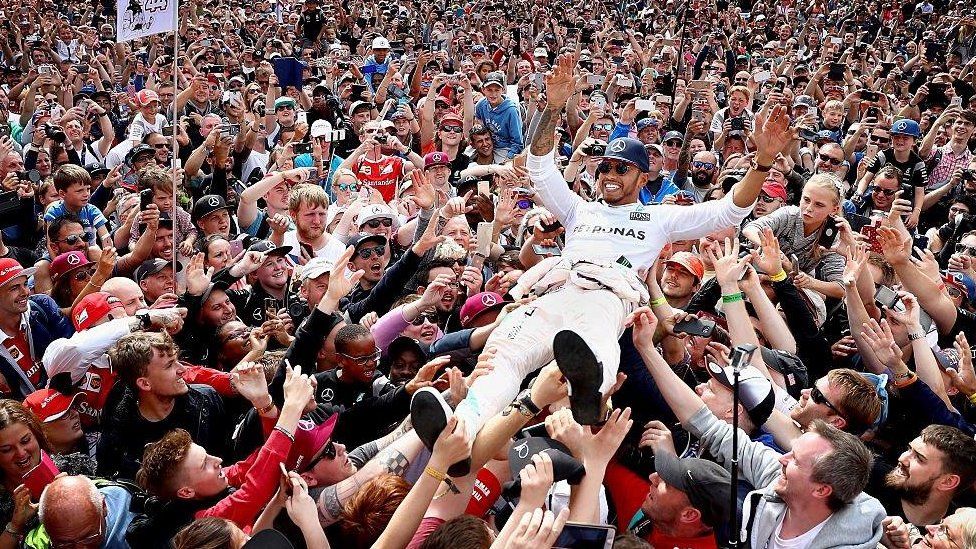

Ahem...Everso Biggyballies wrote: ↑5 years ago 2nd October 1948
(...) BRM driver Frolian Gonzalez leading the pack at the 1954 Grand Prix (...)

Froilan never drove BRM. He drove beside Ferrari's Maserati and Vanwall.Michael Ferner wrote: ↑5 years agoAhem...Everso Biggyballies wrote: ↑5 years ago 2nd October 1948
(...) BRM driver Frolian Gonzalez leading the pack at the 1954 Grand Prix (...)
Red/green colour blindness?


It was black and white to me.... but I guess it was a Frolian slip.Michael Ferner wrote: ↑5 years agoAhem...Everso Biggyballies wrote: ↑5 years ago 2nd October 1948
(...) BRM driver Frolian Gonzalez leading the pack at the 1954 Grand Prix (...)
Red/green colour blindness?





